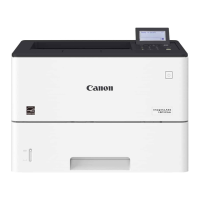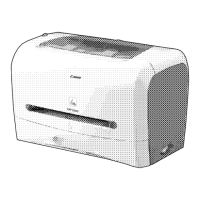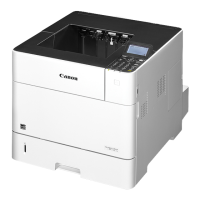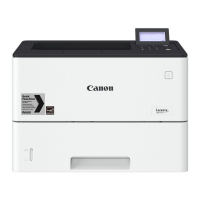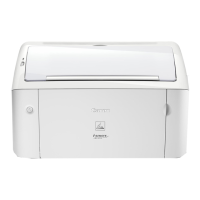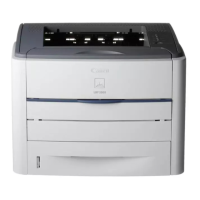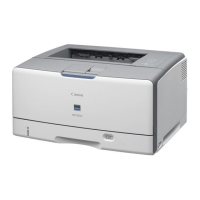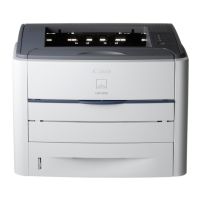Do you have a question about the Canon LBP3250 Series and is the answer not in the manual?
Details the printer's key features, including speed, design, and usability improvements.
Provides comprehensive technical specs: dimensions, power, operating environment, paper handling.
Identifies and illustrates the printer's external and internal components.
Explains basic machine operation, focusing on control panel functions and indicators.
Covers critical safety precautions for laser light, toner, and handling the unit during service.
Describes the printer's functional blocks and overall system architecture.
Outlines the machine's operational sequence from power-on to printing completion.
Details the laser exposure system, its components, and control mechanisms for image formation.
Explains the core image formation process, components, and step-by-step print operations.
Covers the paper pickup and feeding mechanisms, including paper path and jam detection.
Details external components, power supply circuits, and protective functions.
Describes the main controller and engine controller architecture and general functions.
Explains the fixing and delivery systems, including temperature control and safety features.
Provides step-by-step instructions for disassembling external covers and control components.
Details the procedure for removing the laser scanner unit and related parts.
Guides the disassembly of key image formation components like the transfer roller.
Provides instructions for disassembling pickup and feeding system components, such as rollers and units.
Details disassembly procedures for the fixing unit, film unit, and pressure roller.
Lists parts that require periodic replacement as part of routine maintenance.
Identifies the consumables used with the printer.
Outlines the scheduled maintenance requirements for the equipment.
Provides instructions for cleaning various parts of the machine during servicing.
Explains procedures for measurement, adjustment, and test prints for diagnostics.
Lists standard and special tools required for performing service operations.
Provides a table of error codes, their details, and recommended troubleshooting measures.
Describes the procedure for upgrading the machine's software or firmware.
Lists and illustrates key electrical components such as motors, sensors, and PCBs.
Details the printer's key features, including speed, design, and usability improvements.
Provides comprehensive technical specs: dimensions, power, operating environment, paper handling.
Identifies and illustrates the printer's external and internal components.
Explains basic machine operation, focusing on control panel functions and indicators.
Covers critical safety precautions for laser light, toner, and handling the unit during service.
Describes the printer's functional blocks and overall system architecture.
Outlines the machine's operational sequence from power-on to printing completion.
Details the laser exposure system, its components, and control mechanisms for image formation.
Explains the core image formation process, components, and step-by-step print operations.
Covers the paper pickup and feeding mechanisms, including paper path and jam detection.
Details external components, power supply circuits, and protective functions.
Describes the main controller and engine controller architecture and general functions.
Explains the fixing and delivery systems, including temperature control and safety features.
Provides step-by-step instructions for disassembling external covers and control components.
Details the procedure for removing the laser scanner unit and related parts.
Guides the disassembly of key image formation components like the transfer roller.
Provides instructions for disassembling pickup and feeding system components, such as rollers and units.
Details disassembly procedures for the fixing unit, film unit, and pressure roller.
Lists parts that require periodic replacement as part of routine maintenance.
Identifies the consumables used with the printer.
Outlines the scheduled maintenance requirements for the equipment.
Provides instructions for cleaning various parts of the machine during servicing.
Explains procedures for measurement, adjustment, and test prints for diagnostics.
Lists standard and special tools required for performing service operations.
Provides a table of error codes, their details, and recommended troubleshooting measures.
Describes the procedure for upgrading the machine's software or firmware.
Lists and illustrates key electrical components such as motors, sensors, and PCBs.
| Duplex Printing | Manual |
|---|---|
| Monochrome Laser | Yes |
| Printer Type | Monochrome Laser |
| Connectivity | USB 2.0 |
| Paper Capacity | 250 sheets |
| Type | Monochrome Laser |
| Interface | USB 2.0 |
| Supported Operating Systems | Windows, Mac OS, Linux |
